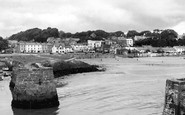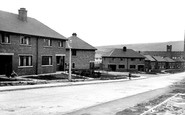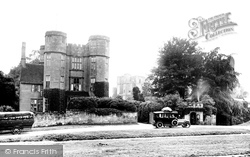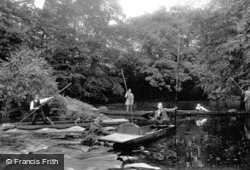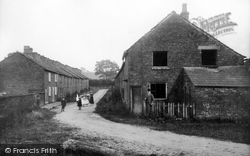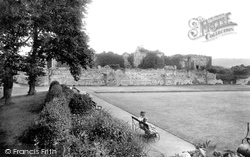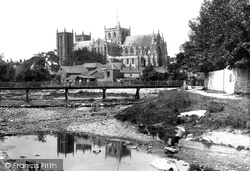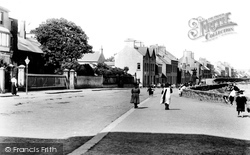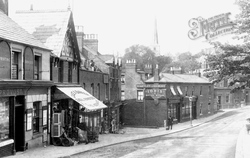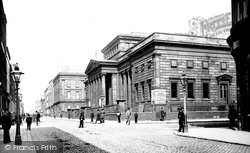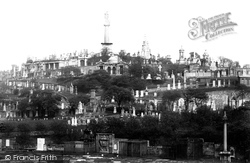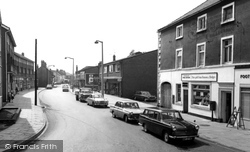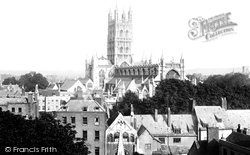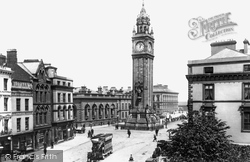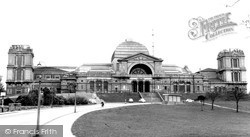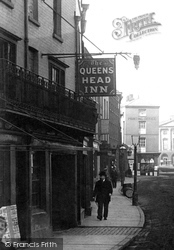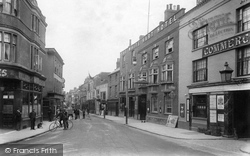Places
1 places found.
Those places high-lighted have photos. All locations may have maps, books and memories.
Photos
Sorry, no photos were found that related to your search.
Maps
22 maps found.
Books
1 books found. Showing results 409 to 1.
Memories
421 memories found. Showing results 171 to 180.
The Big Freeze
I lived in Ashford Road for the first 20 years of my life and my mother still lives in the same house; she has lived there since 1933. I was born in 1950 in the new cottage hospital at the top of the road. I went to school at ...Read more
A memory of Fordingbridge in 1963 by
Gift Shops In The Strand 1970s
I spent every Summer in Saundersfoot from the age of 6 to 15! My Uncle owned the garage at the bottom of the arches in Tenby, and I had great fun exploring. I am trying to remember the name of a lovely little gift ...Read more
A memory of Saundersfoot by
My Childhood Growing Up At The Storey Arms
My grandmother used to live at the storey arms and ran the transport cafe which it was then and lorry drivers would sleep over in 1 of the many bedrooms while travelling on thier journey, Such an ...Read more
A memory of Storey Arms Centre by
Royal Bath Hotel Bath Hill
My first job was at the Royal Bath Hotel in 1956 where I learnt all aspects of Office Work for 2 and half years. Boss was called Mr Dagley, and there were 12 of us in the Office. I was a very nervous 16 year old having ...Read more
A memory of Bournemouth by
John Quinn
I wonder if anyone might remember my father who was a teacher in and around Worcester for many years. He began his career at a primary school in Claines, probably in the late 1940s. Thereafter he worked at St Paul's Secondary, in a ...Read more
A memory of Worcester by
Happy Days
hi diane i too lived around duchess street & began my working life at 87 duchess st the butchers & greengrocers owned by geof n kath garlick around 1974ish i also remember we would go digging for antique bottles at the back of the shop,,,,,,,,,,,,,,,,,,,,,,,,,,,,,HAPPY DAYS
A memory of Shaw by
Happy Days
hi diane i too lived around duchess street & began my working life at 87 duchess st the butchers & greengrocers owned by geof n kath garlick around 1974ish i also remember we would go digging for antique bottles at the back of the shop,,,,,,,,,,,,,,,,,,,,,,,,,,,,,HAPPY DAYS
A memory of Shaw by
1957 Upwards Susan June Keeler
I was a little girl who was adopted to Cecil John Keeler and my first visit to Petham was as a 5yr old. My Granny Fanny keeler and had 5 sons. Dick.Ray.Ted.Cecil and Reg.Granny Keeler also had 3 daughters Daisy.Girlie and ...Read more
A memory of Petham by
A Million Miles From A Game Of Football.
I wrote this piece for a writing group exercise in April/May 2019, near my home in NE Scotland. LIttle did I know then that some of the memories would form part of my Mum's Eulogy just three months later. The ...Read more
A memory of Wembley by
The Vaynol Hotel Summer 1970
Fond memories of Summer 1970. I was sixteen, had just taken my ‘O’Levels in Bramhall, Cheshire, (back then Abersoch was known as Bramhall-by-Sea, perhaps it still is?). I had snared a Summer job as a lowly kitchen ...Read more
A memory of Abersoch by
Captions
469 captions found. Showing results 409 to 432.
Max Miller featured in seven comedies filmed here, and Errol Flynn began his career in one of the films and was promptly whisked off to Hollywood once his talent was recognized.
Work began around 1389, with only the keep being retained. The entire inner ward was rebuilt; it included a great hall, private apartments, kitchens and store rooms.
A frequent visitor to Petworth in the 1830s was the painter J M W Turner; he drew inspiration from the house and grounds, and began to develop the brilliant interweaving of light and colour that characterises
Production began at Round Oak in 1857, and as demand grew the works was gradually extended. In 1889 a chain works was commissioned, and in 1892 Round Oak switched over to producing steel.
In 1765 he began his career as a master road builder, completing the construction of 200 miles across the North.
It was established in 1763, when Charles Roe of Macclesfield began copper working. Later, a large silk mill was built.
Construction began in 1295 under the personal supervision of the King's engineer-architect Master James of St George.
Since 1958 when the first shops began opening, Basildon town centre has been the home for a whole host of differing consumer needs.
Work began on the New River with funding from Hugh Myddleton in 1610, and despite a number of delays through objections by local landowners, the project was completed within a few years.
Reconstruction began in 1069, followed by the building we see today from 1180. The west front was added in 1220. The minster finally became a cathedral in 1836.
This is the Joymount corner of the town; the gardens, no longer there, mark where a governor of the castle, Sir Arthur Chichester, began to build a fine mansion in 1610.
Since 1958 when the first shops began opening, Basildon town centre has been the home for a whole host of differing consumer needs.
The withdrawal of shopping from the village is not a recent phenomenon; in fact, it began prior to the First World War, when the shops on the western slope became houses, leaving only their large windows
The year 2000 saw the gallery closed while work began on expanding it to take in new buildings, including the Athenaeum Club next door on Princess Street.
The medieval fair was held at the upper end of the High Street (Townhead), but as the town began to spread southward, the fair moved to the north bank of the Clyde, near the Stockwell.
Here on the High Street was the busiest part of town, once the coaching and postal services began in 1660.
Construction began in 1089 on a site where there had been ecclesiastical houses of one sort or another since 681.
Work began in 1865, and it took four years to complete. The statue of the Prince is 40 ft above the ground, and the near two-tonne bell could be heard eight miles away on quiet days.
Production began at Round Oak in 1857, and as demand grew the works was gradually extended. In 1889 a chain works was commissioned, and in 1892 Round Oak switched over to producing steel.
It was never a great success; part was leased to the BBC in 1934, and television broadcasts began in 1936.
It began to spread westwards along Brochole Street (now Duke Street). The High Street itself was filling up.
It began to spread westwards along Brochole Street (now Duke Street). The High Street itself was filling up.
A year after this photograph was taken, the Second World War began and the 15th battalion of the Welsh Regiment were based here.
In 1815 Sir George Jerningham began paying it the sum of £60 a year, and, together with his brother Edward, built a new church on the site. It opened on 5 June 1817.
Places (1)
Photos (0)
Memories (421)
Books (1)
Maps (22)

